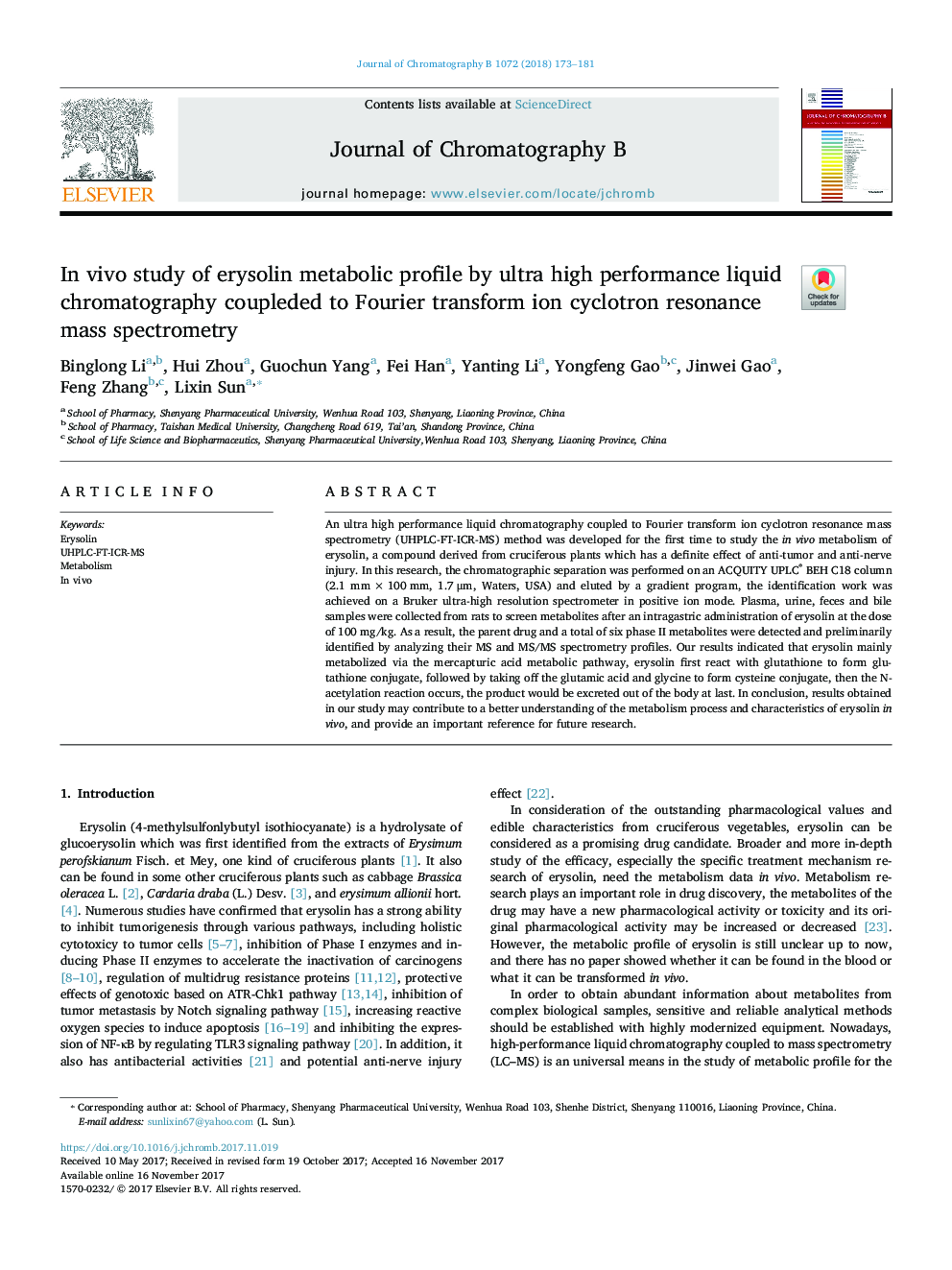| Article ID | Journal | Published Year | Pages | File Type |
|---|---|---|---|---|
| 7615640 | Journal of Chromatography B | 2018 | 9 Pages |
Abstract
An ultra high performance liquid chromatography coupled to Fourier transform ion cyclotron resonance mass spectrometry (UHPLC-FT-ICR-MS) method was developed for the first time to study the in vivo metabolism of erysolin, a compound derived from cruciferous plants which has a definite effect of anti-tumor and anti-nerve injury. In this research, the chromatographic separation was performed on an ACQUITY UPLC® BEH C18 column (2.1 mm Ã 100 mm, 1.7 μm, Waters, USA) and eluted by a gradient program, the identification work was achieved on a Bruker ultra-high resolution spectrometer in positive ion mode. Plasma, urine, feces and bile samples were collected from rats to screen metabolites after an intragastric administration of erysolin at the dose of 100 mg/kg. As a result, the parent drug and a total of six phase II metabolites were detected and preliminarily identified by analyzing their MS and MS/MS spectrometry profiles. Our results indicated that erysolin mainly metabolized via the mercapturic acid metabolic pathway, erysolin first react with glutathione to form glutathione conjugate, followed by taking off the glutamic acid and glycine to form cysteine conjugate, then the N-acetylation reaction occurs, the product would be excreted out of the body at last. In conclusion, results obtained in our study may contribute to a better understanding of the metabolism process and characteristics of erysolin in vivo, and provide an important reference for future research.
Keywords
Related Topics
Physical Sciences and Engineering
Chemistry
Analytical Chemistry
Authors
Binglong Li, Hui Zhou, Guochun Yang, Fei Han, Yanting Li, Yongfeng Gao, Jinwei Gao, Feng Zhang, Lixin Sun,
